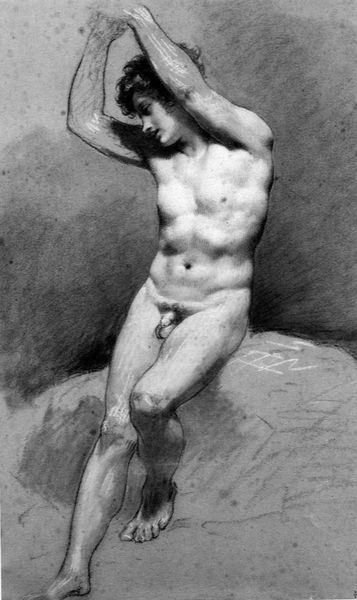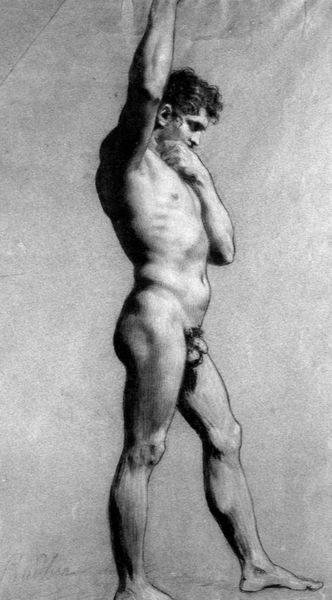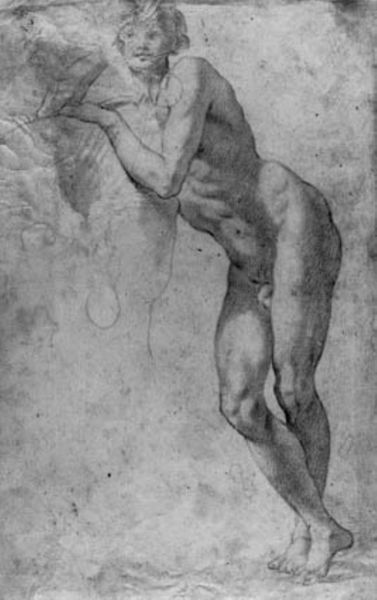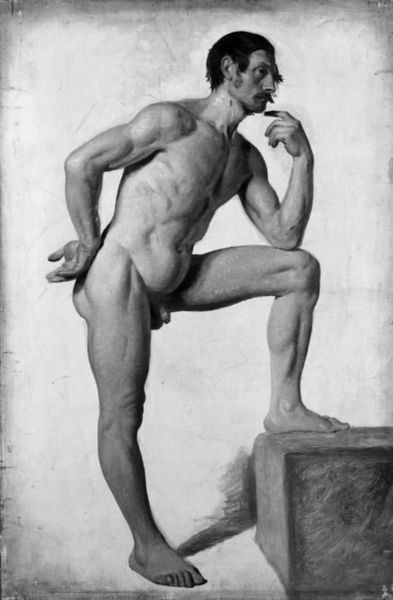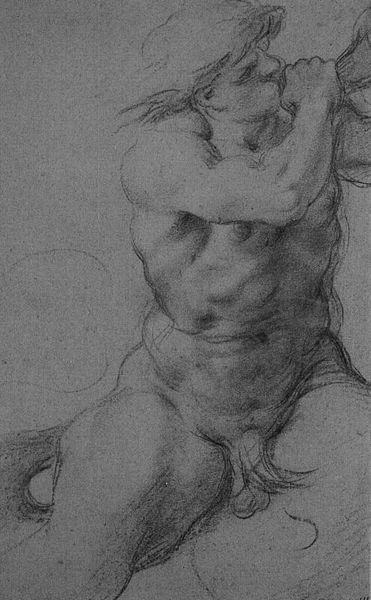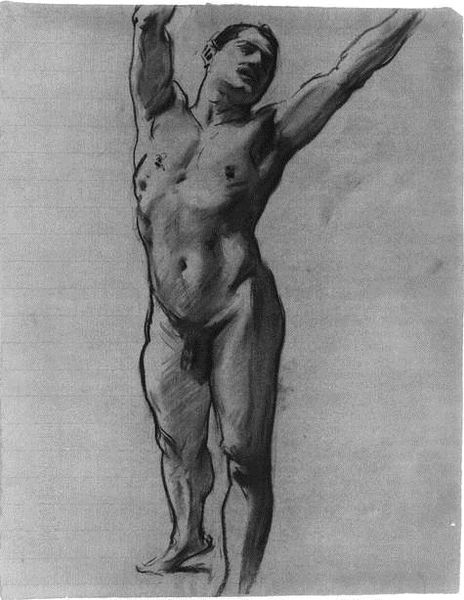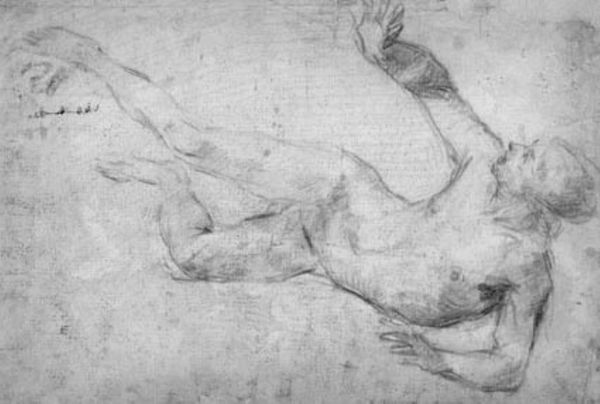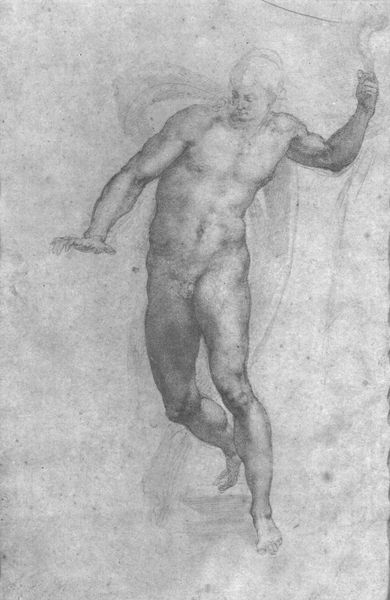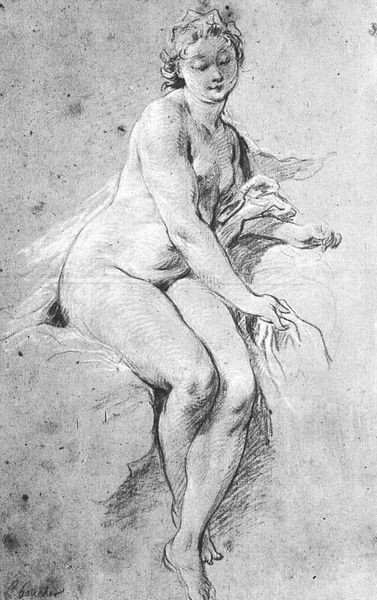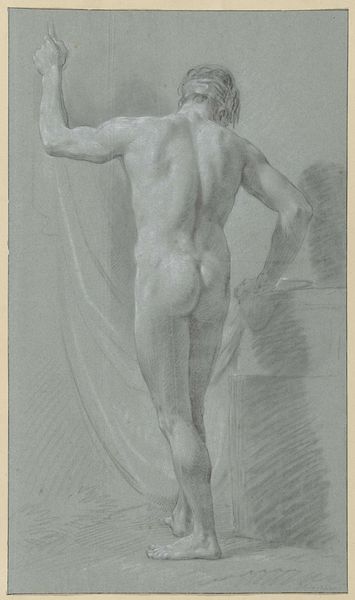
drawing, charcoal
#
drawing
#
neoclassicism
#
charcoal drawing
#
figuration
#
form
#
charcoal
#
academic-art
#
monochrome
#
charcoal
#
nude
#
male-nude
#
monochrome
Copyright: Public domain
Curator: Oh, I see the drama, even in monochrome. It’s dramatic. Editor: Here we have Pierre-Paul Prud’hon's "Male Nude Pointing," a charcoal drawing from around 1800. I find the rendering fascinating, particularly the cross-hatching technique. Curator: He's pointing! Commanding attention, as if to say "Look, there it is, our destiny!". I imagine him declaring the start of something. The lighting's interesting; it creates a rather enigmatic shadow. Editor: I agree, Prud'hon's use of light and shadow is compelling. This drawing comes from a historical context saturated with its own set of conditions – what with access to particular materials, how materials were used and distributed for making art at that point in history… And those historical realities often framed the artist's agency and aesthetic expression. It makes one consider what kind of paper he had to use and whether or not it would affect the mark making? Curator: Oh, undoubtedly. One almost smells the studio from looking at this, feels the grain of the charcoal… There's a tangible sense of the artist working on the human form in real-time, grasping both the ideal and the real. It’s like watching a thought take shape through light and dark. The cross-hatching gives this the immediacy of an energetic sketch but simultaneously brings the sophistication that the technique itself lends. Editor: Speaking of immediacy, it reminds us of the materiality of art creation. Every stroke manifests the physical labor, the repetitive hand movement of the artist. He wouldn't necessarily be alone working in the studio -- we are really speaking of communities that surround art making from processing raw material to being transported by others. I like that Prud'hon manages to imbue it with the same energy as one sees in academic life drawings but offers this incredible study that stands on its own. Curator: Indeed. The work's very existence speaks of collaboration, too. Ultimately it transcends mere representation. I like the tension – it is contained yet vital, somehow. It speaks about both potential and direction. Editor: It leaves you wondering about its initial purpose. Was this an end product, a study, or an intermediary stage to making something larger? What sort of economy allowed the production of it, the circulation of images like this? Curator: In this fleeting charcoal impression, maybe we touch upon the enigma of life and the quest for an ephemeral beauty... That gesture! Editor: For me it triggers a deeper inquiry into the material conditions shaping this piece and the circumstances of its eventual preservation and presentation to audiences like ourselves.
Comments
No comments
Be the first to comment and join the conversation on the ultimate creative platform.
